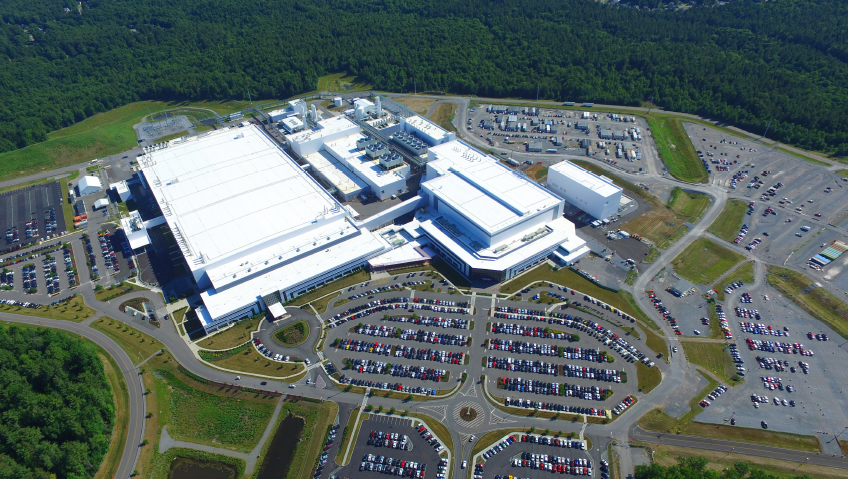A resident of Upland since childhood, Bill Velto has played an active part in the evolution of this California city over the years. Long before becoming Mayor the first time—and running unopposed, being elected again in 2024—Velto served his community on City Council, on the Planning Commission, and as Planning Commissioner. An experienced real estate agent and President of MGR Real Estate, Inc., Velto’s in-depth knowledge of commercial and residential markets has proved invaluable to attracting new homeowners and businesses alike to this charming city.
At age 67, he continues giving back to the entire community. Despite his many accomplishments, Mayor Velto is quick to credit his team at City Hall, including Economic Development Coordinator Melecio Picazo, Public Works Director Chris Alanis, and long-time friend and Upland native Robert D. Dalquest, Upland’s Development Services Director.
The Mayor and his staff are, as he likes to say, “working together to make Upland a better place to call home.” Respecting Upland’s historic past, he remains focused on what the city will be like long into the future. Located in the scenic foothills of the San Gabriel Mountains, Upland was incorporated as a city in 1906.
For decades, it was world-famous for its many lemon groves. Although few remain, the city still pays respect to its past with the Lemon Festival, a popular event drawing over 100,000 attendees annually. Taking place every April or June since 1997, the Festival has become a citywide event featuring craft vendors, food competitions, the annual Lemon Idol vocal contest, and more. Popular with local and visitors alike, it is just one of many reasons to visit Upland, along with its unique, thriving downtown area.
“In recent years, Upland has witnessed a revival of its historic downtown, thanks to the dedicated efforts of city staff, city council, and community leaders,” states the city in its ‘The City of Gracious Living’ brochure. “From revitalizing old buildings to promoting local businesses, the renaissance of downtown Upland reflects a deep-seated pride in preserving the city’s downtown core for future generations to cherish.”
Upland’s downtown is well over 100 years old; in fact, it pre-dates the city’s 1906 incorporation. Over the decades, it suffered the same fate as many other downtowns in smaller communities. As the area grew, big box stores set up in the suburban area, leaving the downtown a hodgepodge of businesses with no central vision. Around 2017, two programs were developed by the city to aid downtown revitalization: the Commercial Rehabilitation Program and the Business Assistance and Attraction Program.
“Since 2019, we’ve brought in seven new restaurants, two microbreweries, and a couple more food businesses, and that has really helped a lot,” states Development Services Director Dalquest. Three residential projects have also been approved around and in the downtown. One is now being developed, a 32-townhome project for sale just one block from the main downtown area. “Overall, those three projects are over 300 units, and that’s going to go a long way toward patronizing those businesses and creating a vibrant downtown.”
To make the downtown a thriving dining and entertainment district, the city is looking beyond bricks and mortar. Recognizing a lack of public space downtown, Upland secured several grants to create small pocket parks downtown, which were recently completed, and is going out to bid on the Tom Thomas Magnolia Plaza, a 0.69-acre urban space which will serve as a central gathering area. “What’s key about that site is a major Class 1 trail goes through there,” says Dalquest. “It acts as an urban plaza where people can congregate and enjoy the downtown, but with the trail, it will also become a trailhead.” Along with erecting a restroom, the site will also feature an entertainment stage to create more community event space.
The city has also been successful in securing federal grants—three grants to cover two urban space projects, with another $850,000 earmarked for restoring the Historic Santa Fe Depot Station. Currently, there are two buildings on the site with three tenants, including a wine merchant and cigar lounge, a restaurant, and a vacant space. Staff are proactively working to fill the vacant space with a quality tenant. The move will not only make the Station more inviting but also increase the number of riders.
“In the last three years, we have helped 14 businesses,” states Economic Development Coordinator Picazo. “And since inception in 2016/17, we have assisted over 30 businesses in the downtown with Community Development Block Grant (CDBG) investment of over a million dollars. It’s been a great program that’s revitalized the downtown and made it a vibrant place to dine and shop.” These businesses include seven restaurants, two breweries, one small market, two food businesses, and an axe-throwing entertainment company.
Along with the Lemon Festival, Upland is home to farmers markets, March’s Irish Festival, October’s Scary-a-faire, winter events, and more. The city is also considering closing Second Avenue one night a month starting in April for outdoor dining. Goals include creating a more walkable area, erecting a parking structure, and bringing in more housing to increase downtown foot traffic.
Certainly, Upland’s downtown is home to unique businesses. These include a candy store, a thrift store and novelty shop, a jewelry store, and Six Feet Under. A world-famous tattoo parlor, Six Feet Under is owned by Corey Miller, a tattoo artist featured on the show LA Ink. Specializing in black-and-grey designs, Miller’s clients include Metallica’s James Hetfield and former pro baseball player Jason Giambi. Along with his shop, Miller has a museum of collectibles. “I’m trying to talk him into opening a place called Burgers, Brews, and Tattoos,” jokes Mayor Velto. “Corey’s a creative guy.”
Both Velto and Dalquest grew up in Upland and share the same goal for its downtown: truly making it a destination. “The idea is to make it more appealing to a larger group of residents,” says Velto. “So, I share with people that my vision of downtown is not for me; my vision is for the 20 to 40-year-olds and the 40 to 60-year-olds. It is really the next two generations who will see the value. The revitalization is to create that vacuum for the people to come to.” With a median age of 38, the area is already home to many younger persons interested in the area’s restaurants, shops, nightlife, and attractions.
For the city’s population of nearly 79,000, Upland is known as The City of Gracious Living. For Mayor Velto, the tagline has a lot of meaning. His birthplace, Yonkers New York, is also known as ‘The City of Gracious Living,’ and was the place where he lived before his family moved to Upland.
The expression goes back decades and encompasses Upland’s tree-lined streets, beauty, and kindness toward others. “We are known as the City of Gracious Living partly because of our attractive residential neighborhoods and beautiful historic homes, including turn-of-the-century Victorian and craftsman bungalows,” says Picazo. “There are over 27,000 households in Upland, with a median home value of $680,000.”
Just 32 miles from Pasadena and 37 miles from Los Angeles, Upland is quieter, safer, and far less congested than other larger centers. At the heart of it all, Upland is famous for its scenic beauty and outstanding quality of life.
Mayor Velto and his team continue to set goals and objectives for the future of the City of Upland. This includes transforming four former citrus packing facilities, repurposing them into food courts and other businesses, and working on new apartment spaces. Several years ago, a consultant was hired, and a five-year action plan was created for economic development. The process included extensive public outreach, workshops, and a mail-in survey. Some highlights included the need for more department stores offering a variety of products, furniture shops, electronic businesses, and more sit-down, white cloth restaurants.
Says Mayor Velto: “Bob and Melecio make dreams come true, but they keep us in line to make sure we are not going to impact the environment.” He would like to see the few microbreweries in the city grow to seven to 10 in the entire downtown, along with a couple of wine shops. “We are right along the railway,” he states. “There is no other city in Southern California along the railway that’s known for microbreweries. With microbreweries come the small, mom-and-pop-type restaurants. We are not looking for the chain restaurants to come to our downtown; it’s just not structured for them… That’s not to say we’re not interested, but that our small town/small business feel is what we are trying to keep up.”
Eager to get businesses up and running, Upland has a great staff active in development services, including planners who process entitlements. “We have next-day building inspection services,” says Dalquest. “It’s really a team effort, and our department is involved in all aspects of development.” These include entitlements and project approval, followed by plan check reviews and building inspections. “So we operate on all cylinders, and shepherd projects through the system.” If there are any issues during the three phases of development, the team looks into them immediately and will act as an intermediary with developers.
“Bob’s department has done a tremendous job,” states Velto. “We get nothing but accolades from the developers that come into our city. Bob has found a way, with his team, to fast-track as much as possible and stick to their guns. Bigger developers understand the process and are willing to work within the confines of the city.”
Along with its gorgeous scenery and historic downtown, the City of Upland is famous for its new, 7.5-million-gallon water reservoir. Replacing a 48-year-old facility, Reservoir 15 was primarily funded by the city’s utility rate and a portion of its water bond.
“The reservoir—and we have several of them—is the actual storage capacity of all of our potable water,” says Public Works Director Alanis. “This benefits industrial and residential users, firefighters, things of that nature.” Most remarkable is that Upland owns almost 74 percent of the water company. “We are one of a number of municipalities in California that actually owns a water company,” states Velto. “We’ve got an abundant supply of water, because it comes from the mountains and is very high quality. And we control the majority of it, because we are the super-majority shareholder of the stock. So we control our own destiny when it comes to water.”
Into his second term as Mayor, Bill Velto is not content to rest on his achievements but is eager to keep improving the City of Upland for residents and businesses alike. “The legacy I am trying to leave is one where I am just giving back,” he says. “I’ve gotten so much from the city in my lifetime that this is all about giving back to the community… The city staff and employees are the lifeblood of this community. They keep the heartbeat going. And their dedication and loyalty to the city is not found anywhere else.”
Instead of micromanaging, Velto has faith in his experienced people, trusting them to do their jobs and do them well. If anything, he believes his legacy will be that of someone who stayed out of the way. “My tagline will always be: ‘Working Together to Make Upland a Better Place to Call Home,’” he says.






